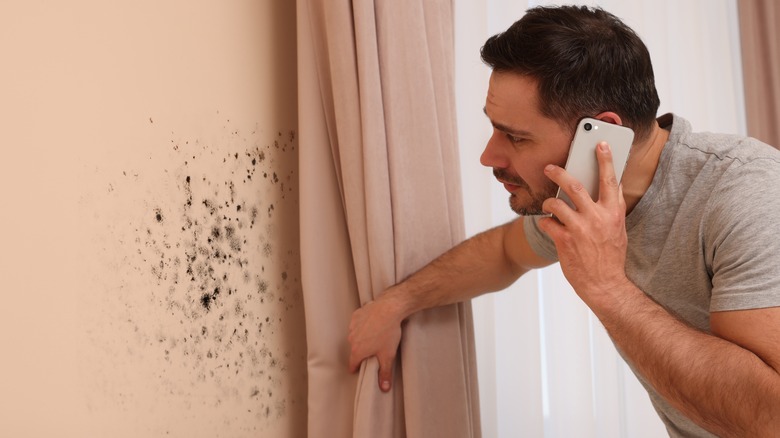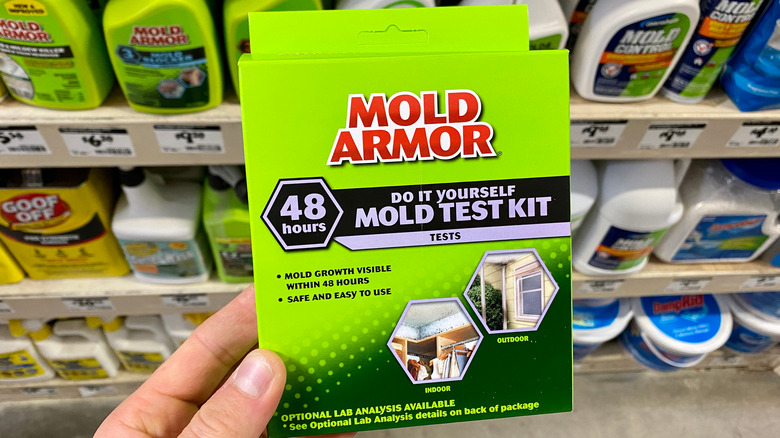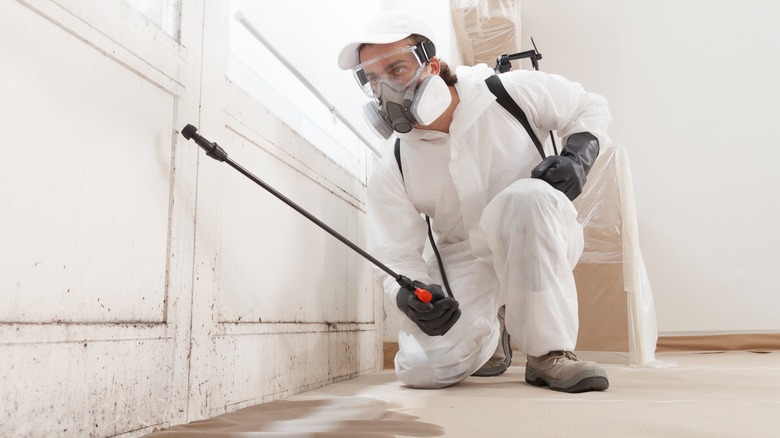Is There A Mold Detector? (& What Can Help Identify A Problem In Your Home)
We may receive a commission on purchases made from links.
Unwelcome houseguests aren't just the ones who come over unannounced or tiny critters that invade your food supply. One of the nastiest guests a homeowner can face comes by after a leak or an extra humid patch in summer: mold. Like a bad guest, it doesn't know when to leave. Is there a mold alarm or detector you can use? The best mold detector is a professional remediator, but there are other tools that can help identify certain mold species or alert you to a mold-friendly environment.
You may "feel" a mold invasion before you finally see it, as it may be hiding behind walls, under floors, in your HVAC system, or deep in your basement. If you have gone from counting sheep in bed to counting coughs and wheezing, those spores may have made their way to your lungs. Exposure can lead to severe asthma and lung irritation. Additionally, failure to act swiftly can create an average decrease in property value of 59%, according to a review published in The Appraisal Journal. From meters to sensors to test kits, here are some preliminary tech tools to use before calling in professional mold remediation services.
Tools that can help identify mold
Mold sensors work by detecting airborne spores. However, the devices may also pick up other substances. The spore sizes can vary based on the species, and all sensors won't pick up ones that fall outside of coarse or fine particle sizes. If you have Alexa, start each day off by asking about your indoor air quality when you buy the Amazon Smart Air Quality Monitor. It doesn't detect mold but can alert you to high humidity levels that feed mold growth. Similarly, leaks can quickly breed mold, so having a leak detector on hand can prevent costly damage. Consider the Pinless Wood Moisture Meter to check those suspicious water stains without penetrating the wall.
With over 7,700 reviews, of which over 50% are five stars, the Mold Armor Do It Yourself Mold Test Kit allows you to test for mold inside and outside the home. The kit uses three test methods that include surface sampling for visible mold, HVAC sampling, and indoor air quality testing.
You might be fairly certain that mold is forming in your HVAC system's ducts, drain pans, and coils. Perhaps, when the system is running, your eyes start to water, or you notice that the air smells musty. In this scenario, you might think twice about using an at-home mold test kit and go straight to the pros. Have an HVAC specialist either clean the unit properly or recommend a new one. Remember, without regular AC servicing, mold can quickly build up.
Why you need more than DIY mold detection
Technology is useful as a first step in detecting limited amounts of mold or providing a warning about humidity and leaks. However, these kits may only spot certain types of fungal growth without providing a distinct classification. Upon sight, it can be easy to mistake mildew for black mold. Since the most toxic form of black mold, Stachybotrys chartarum, has been linked to killing brain cells, causing heart palpitations, and causing seizures, you want to be clear on what type of fungus is in your home. Only a professional mold remediation team can provide this clarification and effectively rid your home of your unwelcome guest.
Early detection of mold can prevent a decline in health, increased mold remediation bills, or being left with a home that's become a money pit. Compare your mold detection options to see which one fits your situation. However, this detection technology isn't the final step. If mold is likely present, call a professional mold remediation service to solve the problem.


